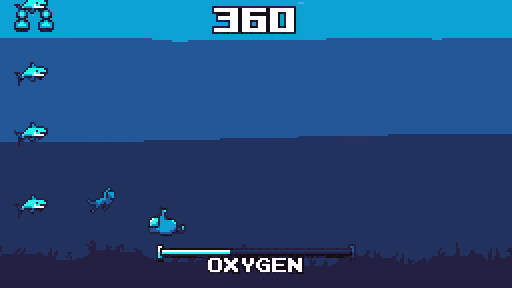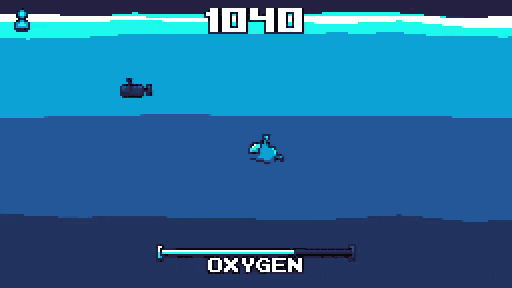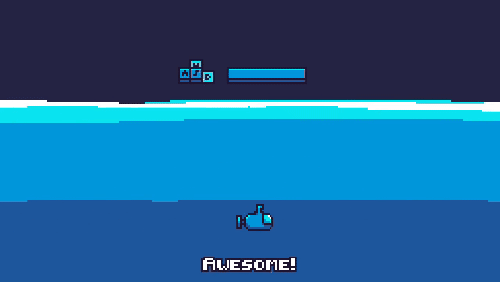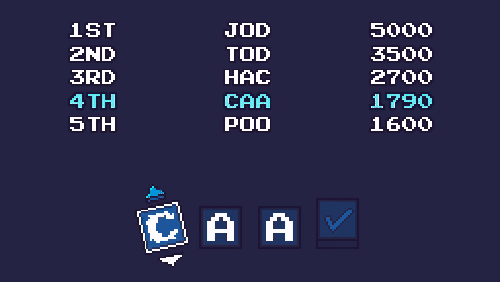SeaDefender's Unexpected Development

Retro Remake
SeaDefender was a game I made based on SeaQuest. My intention was to startup a series on YouTube called Retro Remake. The idea was to recreate these retro games in a limited amount of time.
I worked on the game for a few weeks. Vacation and large gaps in development ultimately led to me putting the project on hold.
Over vacation I had a lot of fun making some graphics for the series in Blender. Too bad, I never made the video.
It’s weird how your perception of your project changes while you are working on it. When I was working on the game, all I saw was problems. A flawed game, that didn’t work. And I was burnt out. You would think that if I based my game off of another that’s proven to be successfully, I wouldn’t have issues. Yet, I ran into a lot of design problems. This was the result of me changing my game so much from the original. Sure they may look very similar, but mechanically they are very different.
After a lot of burnout, and doubt in the project, I ended the SeaQuest remake. The project sat for a year. I came back to it a few times, sad that the project never gotten finished. While I came back to it, I realized the potential that it had.
TSA Remake
It sat until the TSA (Technology Student Association) high school video game design competition. The theme was “Arcade in a Museum.” This was perfect, I could finally finish what I started. So I decided to recreate the game for the competition.
Technically they gave us a few months to develop the games. I was very busy, and I didn’t know till much later. So that gave me only a few weeks of development.
Many schools assigned their classes to make a game, and they would recieve a grade at the end. I wasn’t in one of those classes, which was too bad, but I’ll still have enough time to finish.
TSA required that you must work in teams. So I teamed up with my friend Luke. He has little experience with game dev, but all of his efforts were appriecated.
TSA did have a few requirements for the game…
- A full game portfolio
- Copyright checklist
- Storyboard
- Plan of Work Log
- 3 levels that can be played fully through
Here’s a picture of my “storyboard.”

So apparently the game is supposed to have a story. I was so worried on finishing the game on time, I didn’t have the time to complete a story. Not gonna lie, having the requirement for “story” is kinda dumb. Some games don’t have a story, especially arcade games. Yeah what’s the story in space invaders? Get rid of them! That’s what it is.
I also didn’t like the whole level requirement. Some games don’t have your typical “levels.” Especially if it’s an arcade game, you kinda just keep playing an ever increasing difficulty until you lose. Think of Asteroids. Classic, arcade game. Does that have levels? Nope! So uh, I don’t see why levels are a requirement.
You can tell the people that created the whole video game design competition system at TSA don’t play video games.
So as I was stressing out trying to get the game finished on time, I was also stressed about the portfolio. There’s so many documents you have to sign and make sure you get correct. The website at the time was a mess, trying to figure out what I needed and making sure everything’s correct.

For the game, I just added some new enemies, and refined the game mechanics.
Anyways, after crunching like crazy, I finished the game, and the portfolio. The story had to be absent from the game. I didn’t have the time to work it out. So I went to submit the game, and spent an hour navigating the site trying to figure out where to submit. You don’t submit to the official TSA site till you go to nationals. So I needed to figure out how to submit to the Utah TSA site. Anyways, I figured out I had to hit the “register my chapter button,” only then to login. Which then I had to figure out the password from my teacher, who is the chapter adviser. After he gave me the password, it still failed. With many variations of failed login attempts I had to try something else. I had to email the Utah State TSA Advisor to get it submitted.
After that painfull process, the game was submitted and ready. Here’s the game’s portfolio if anyone wants to see.
The game placed 2nd in the state. I believe there was around 11 teams that participated in the state competition. Does this mean I get to go to nationals? No, but I thought so. I thought I read something on the website saying that the first 3 teams will go to nationals. And robotics had 3 teams go to nationals as well, so I assumed we were too.

So I kept working on the game. I noticed that most players have no idea how to play the game. So I added a tutorial, which was very much needed.

I added lazer sharks!! Just for the memes, idk thought they could be fun.

And I added a high score screen. I was hoping this would really push the arcade theme of the game.
Anyways, it came time to submit for nationals, and that’s when I realized that we weren’t going to nationals. Yeah it was disappointing. I could blame it on everything else. But ultimately it was my fault. I’ve accepted it and moved on. We all fail, we aren’t perfect, and we just gotta keep moving forward. Failure is part of the process, and that’s how we learn and grow. Those that are most successful are those who have failed the most. It didn’t turn out the way I wanted, but that’s okay. Later I realized that wasn’t the end for this project.
Udemy Remake
So now it’s summer and I need to get a job. My dad suggested that I should do a Udemy course. I did some research and found that these game development courses can potentially make quite a bit of money. I already had some experience doing YouTube tutorials and teaching game development with the Godot game engine. So I think it could potentially work out pretty well.
So I decided to make a Udemy course based on this game. I guess I haven’t done enough remakes yet. As you might imagine, the code for this game doesn’t look too good. Time to get to work, going through every line of code simplifying and cleaning everything up. Godot’s best practices was a very helpful resource for this.
The hard part about making this course is making it as simple as possible. This is a complex game, and I’m trying to make a course for beginners. So I’ll do my best, we’ll see how this goes. Trying to achieve the balance between clean and simple code. More often than not the cleanest approach usually is the most complex to understand.
Anyways, after remaking the game for the third time, it’s now time to record the course. That’s where I’m at right now. In the next part, I’m gonna talk about the process of recording and making the course. Anyways, that’s where I’m at right now, thanks!